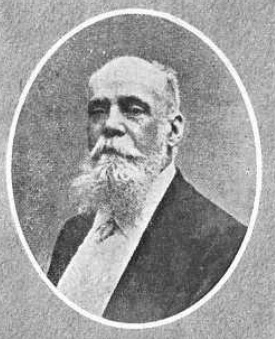Rafael María de Labra facts for kids
Quick facts for kids
Rafael María de Labra
|
|
|---|---|

Portrait circa 1911
|
|
| Personal details | |
| Born | 7 September 1840 Havana |
| Died | 16 April 1918 Madrid |
| Nationality | Spanish |
| Occupation | Politician, writer, educator, journalist, lecturer, lawyer |
| Signature | |
Rafael María de Labra y Cadrana (born September 7, 1840 – died April 16, 1918) was an important Spanish figure. He was an educator, activist, and lawyer. He also worked as a journalist and lecturer. Labra was a Republican politician and a writer.
He was the head of the Institución Libre de Enseñanza twice. This was a famous school in Spain. Labra was also a strong abolitionist. This means he worked to end slavery. He played a key role in stopping slavery in Puerto Rico and Cuba.
Contents
Rafael María de Labra's Life
Rafael María de Labra was born in Havana, Cuba. His birth date was September 7, 1840. His mother was Rafaela González Cadrana from Cuba. His father was Ramón María de Labra, a Spanish army officer. His father had been exiled, meaning sent away from Spain. He came to Cuba in 1836.
Moving to Spain
In 1849, Rafael moved to mainland Spain with his family. They first lived briefly in Almería and Cádiz. Soon after, they settled in Madrid. When he was a teenager, Labra joined the Ateneo de Madrid. This was a well-known cultural and scientific club. He became a member on November 15, 1857.
His Education and Early Career
Labra studied at the Central University of Madrid. He learned from important teachers there. He earned degrees in Philosophy and Letters in 1858. He also studied Administrative Law and Civil and Canon Law in 1862.
His ideas about how colonies should be governed were seen as "dangerous." Because of this, he could not become a university professor. Labra was a member of the Spanish Abolitionist Society. He became its president in 1869. This group worked to end slavery.
Political Career
Labra became a member of the Congress of Deputies in 1871. This is like being a member of parliament. He represented the area of Infiesto in Spain. He later won seats representing Sabana Grande in Puerto Rico. He also represented Havana and Santa Clara in Cuba.
He was also a member of the Spanish Senate. He was chosen to represent the University of Havana. He also represented a group called the Sociedad Económica de Amigos del País de León.
Leading Educational and Cultural Groups
Labra was the president of the Institución Libre de Enseñanza (ILE) from 1881 to 1882. He returned to lead the ILE again in 1885. He stayed in this role until he passed away. In 1913, he was also chosen to lead the Ateneo de Madrid. He served there until his death.
Rafael María de Labra died in Madrid on April 16, 1918.
Labra's Important Ideas
Labra believed strongly in the idea of self-rule for colonies. He thought that colonies like Cuba could manage their own affairs. He said he did not want the colonies to be fully independent. He believed they could have self-rule and still be part of Spain.
He was a firm Republican. This means he believed in a government led by elected representatives, not a king. He was also known as a "Revolutionary Liberal." He was a key leader in the fight to end slavery in Cuba and Puerto Rico. Labra was also a pacifist. This means he believed in peaceful ways to solve problems.
He thought that educating people was very important. He believed that good education could help different social classes work together. He also thought it would help people take part in politics.
Images for kids
See also
 In Spanish: Rafael María de Labra Cadrana para niños
In Spanish: Rafael María de Labra Cadrana para niños


